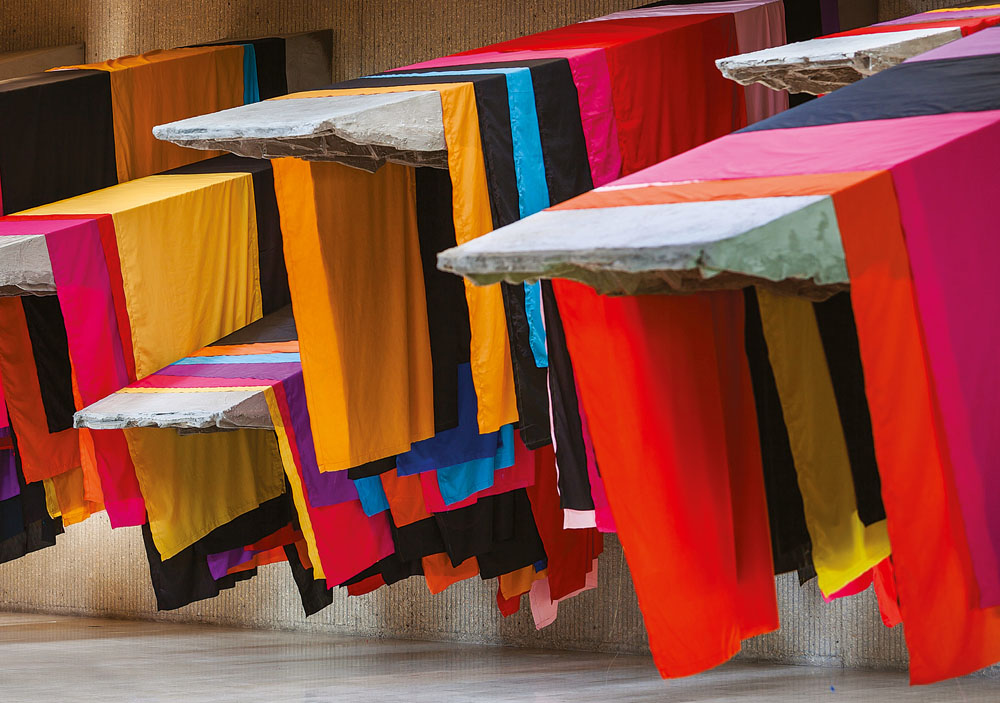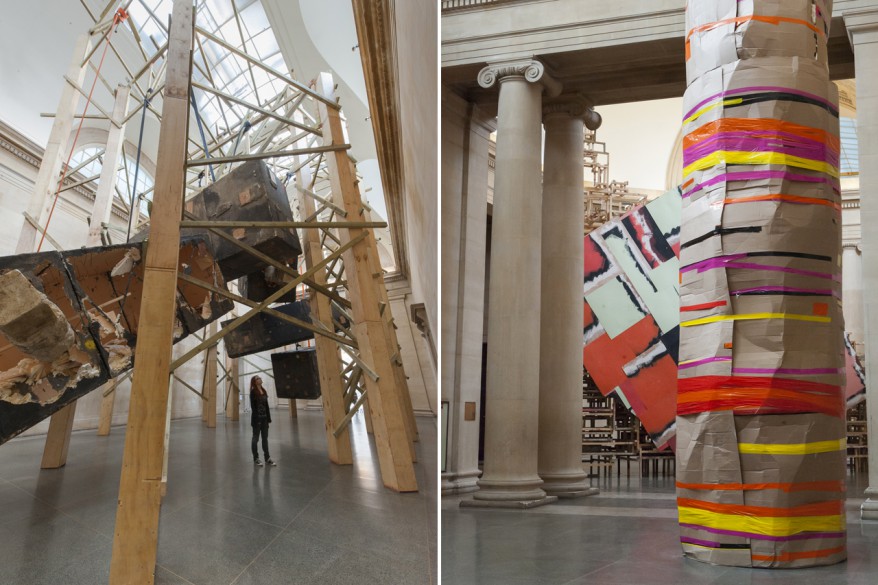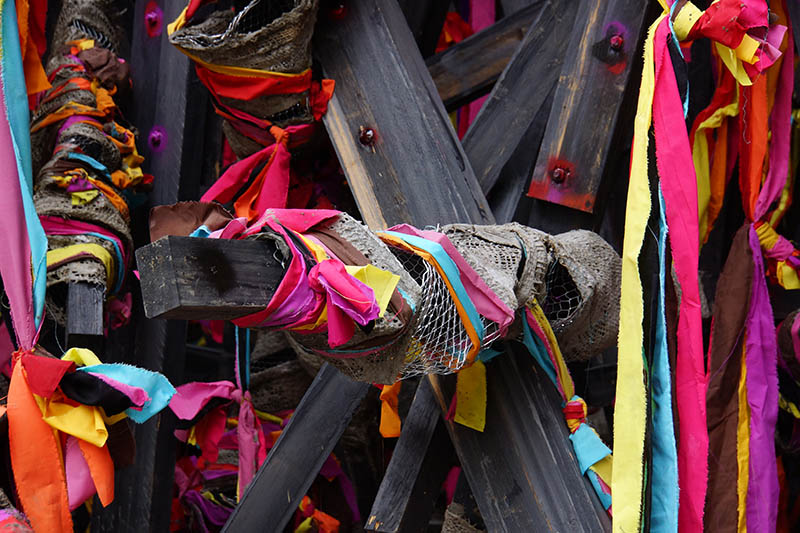Sculptor Phyllida Barlow to Mix Prestige with Precarity at the 2017 Venice Biennale
By Something CuratedBritish sculptor, descendent of Charles Darwin and notable chaos theory enthusiast Phyllida Barlow has been selected to represent her homeland by designing the British Pavilion for the 2017 Venice Biennale. From polyurethane to plaster to cement to timber, and with a good number of strewn ribbons, dangling neon pom-pom balls and wall-mounted, colour-blocked cloaked concrete slabs thrown in for good measure, Barlow’s atmospheric installations are more than just sculpture: they’re entire worlds. Barlow’s interests lie at the intersection of colour theory, affect, sensory experience and total immersion. Her practice is informed by architecture, most noticeably a fascination with the idea of the anti-monument and ideas of accumulation and juxtaposition through space and the viewer’s relationship to it. Her work is both playful and mindful: sometimes super-saturated fabrics and monochromatic industrial at others, but always larger-than-life. It thrives on contrasts, mixing soft and hard, solid infrastructure and dangling instability, intricate detail and all-consuming forms. The result is a unique spatial experience that is as striking as it is unsettling.

Barlow, who has been represented by cult art house Hauser & Wirth London since 2014, taught at the Slade School of Fine Art for almost half a century before retiring in 2009 to pursue her own work.In 2011 Barlow was elected as a Royal Academician. Barlow has had solo exhibitions at an array of cultural institutions worldwide, including the New Museum, the Henry Moore institute, the Nasher sculpture centre in Dallas and , as well as a duo show with Nairy Begharmian at the Serpentine in 2010. Her work has also appeared in pioneering contemporary art spaces and events, including the First International Kiev Biennale in Ukraine, Vienna’s BAWAG Contemporary, and the Fruitmarket Gallery in Edinburgh and the Ludwig Forum in Aachen, Germany, among others.

“Sculpture’s reality is its reality—being there with it and walking around it, stalking it. Every movement we make in relationship to a sculpture generates another point of view.”

As the chosen artist for the 2017 British Pavilion, Barlow finds herself in good company: previous years’ selections include Sarah Lucas (2015), Steve McQueen (2009), Tracey Emin (2007) , Rachel Whiteread (1997), and Anish Kapoor (1990). Many of the artists selected throughout the competition’s long history have developed practices that incorporate themes and concerns of architecture – an apt interest and finesse to have, simply due to the nature of the project. The Venice Biennale, which includes both Art and Architecture exhibitions within their respective pavilions, takes place from late May to late November of every year.
